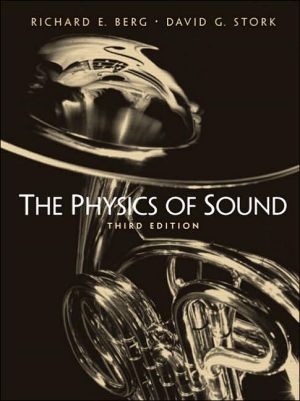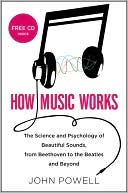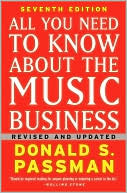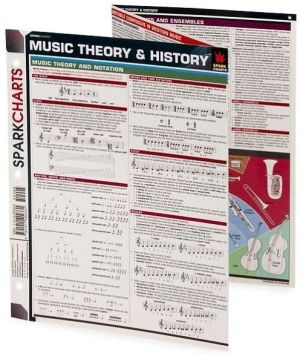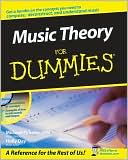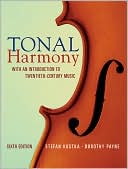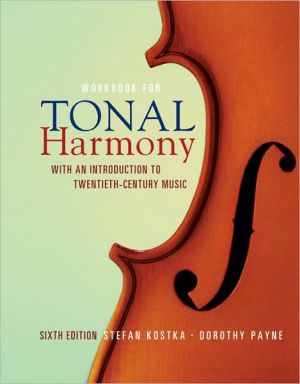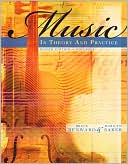The Physics of Sound
This book incorporates the developments in digital audio technology, including consumer products, into a firm foundation of the physics of sound. No knowledge of physics, mathematics, or music is required.\ Includes updated information on musical synthesizers. Provides recent information on the ear, including new advances in cochlear implant technology. Updates material for modern technology, particularly MP3. Features abundant examples, including discussion of demonstration experiments....
Search in google:
Revision of the best selling introduction to acoustion, appropriate for physics of Sound/Musical acoustics for young adults. New editionstresses modern instruments. Booknews A revised and updated textbook (1st ed., 1982) for an introductory course in acoustics for nonscientists--both musicians and nonmusicians. Unlike most elementary acoustics texts, it treats the historical development of instruments, paying particular attention to acoustic developments. Most chapters conclude with a set of problems and a list of resources. A solutions manual is available for instructors. Annotation c. Book News, Inc., Portland, OR (booknews.com)
The Physics of Sound was written for an introductory course in acoustics for nonscientists. A background in neither physics nor mathematics above high school algebra is required. Traditionally, such courses have been tailored to music majors; nonmusicians either do not enroll or do not fully appreciate the physical principles because they are applied almost exclusively to musical topics. We have tried to avoid this limitation by dividing the text into three main sections.\ Chapters 1-4 present the basic physics essential for virtually all topics in the text: simple harmonic motion, wave principles, resonance, standing waves, the overtone series, Fourier synthesis, and spectrum analysis. No previous musical knowledge is required to appreciate these chapters, and a brief summary of the basic musical notation used in these chapters is provided in Appendix A. Applications and illustrations come from a variety of musical and nonmusical areas. We have revised Chapter 1 with additional discussion of SHM and apply these concepts to debunking psychokinetic myths. Our discussion of wave properties of sound in Chapter 2 has been revised to include a discussion of modern applications such as noise cancellation technology, highway noise barriers, and ultramodern sonogram technology.\ Chapters 5-8 illustrate the principles outlined in Chapters 1-4 and are of general interest to the musician and the nonmusician alike. The use of musical concepts and notation has been minimized so as to retain the broadest base of appeal, but the more important musical aspects of each topic are still included. For example, Chapter 7 on sound reproduction and Chapter 8 on room acoustics illustrate the principles presented in earlier chapters and are of substantial interest because of the part they play in our daily lives. We use the discussion of analog synthesizers in Chapter 5 as an opportunity to investigate the differences between sounds by studying how these sounds are created in a synthesizer. Our treatment of digital synthesizers has been updated to include use of computers as an integral part of the synthesizer system. The material on MIDI systems includes further discussion of how these systems are used to compose music and to aid musical performance using contemporary computer programs such as Sibelius. We have also added a section on physics and synthesizers in contemporary electroacoustic music composition. Chapter 6 discusses the principles of the ear and the voice at an elementary level, but has been updated with a section on cochlear implants, which have literally dated a revolution in education of hearing disabled children. We have also included 4 section on the use of audio spectrograms in teaching language to the hearing disabled. Chapter 7 has been thoroughly revised from the second edition to include a discussion of MP3 using the concepts of spectral analysis and masking covered previously. Chapter 8 has been updated with a discussion of visual and musical features for a new auditorium at the University of Maryland. The first eight chapters contain the core material for a one-semester course in the physics of sound and music.\ Chapters 9-14 are more specialized. Each of these chapters independently treats a different aspect of musical acoustics and is best (though not exclusively) understood by those with some musical experience. Photographs of families of contemporary instruments have been added to the chapters on woodwinds and brasses. Any of the final six chapters could be studied in class or could naturally be assigned to students on an individual basis.\ Unlike most authors of elementary acoustics texts, we have treated the historical development of instruments, paying particular attention to acoustical developments. We have also tried to relate the physical principles of contemporary instruments to performance technique; the knowledge of how and why an instrument works and its limitations and problems should improve one's performance.\ For the third edition, each chapter now includes a summary, with highlighted words defined in a glossary near the end of the book, and the number of questions and problems at the end of each chapter has been significantly expanded. The questions and problems for the last six chapters require greater sophistication than those for the earlier chapters and could form the basis for student projects.\ A text is but one of the resources useful in helping the student to learn the material. Our course as taught at the University of Maryland uses a large number of demonstrations, audiotapes, films, and videos; information regarding these materials is available on the Web. A four-hour set of videos, "Demonstrations in Acoustics," including many of the demonstrations used in our course, is available in DVD format from the University of Maryland. A Solutions Manual (013-185594-8) is available from the Publisher for instructors using the text. When fully integrated, we believe that these resources will bring to the nonscience student a deeper understanding and appreciation of acoustics, the physics of sound, and of science in general.
(NOTE: Each chapter concludes with Summary, Questions, Problems, and References.) 1. Simple Harmonic Motion and Applications 2. Waves and Sound 3. Standing Waves and the Overtone Series 4. Analysis and Synthesis of Complex Waves 5. Electronic Music and Synthesizers 6. The Human Ear and Voice 7. Sound Recording and Reproduction 8. Room and Auditorium Acoustics 9. Musical Temperament and Pitch 10. Woodwind Instruments 11. Brass Instruments 12. String Instruments 13. The Piano 14. Percussion Instruments Appendix A: Elementary Music Theory Appendix B: Terms and Units Appendix C: Prefixes with Common Units Glossary of Terms Index
\ BooknewsA revised and updated textbook (1st ed., 1982) for an introductory course in acoustics for nonscientists--both musicians and nonmusicians. Unlike most elementary acoustics texts, it treats the historical development of instruments, paying particular attention to acoustic developments. Most chapters conclude with a set of problems and a list of resources. A solutions manual is available for instructors. Annotation c. Book News, Inc., Portland, OR (booknews.com)\ \
